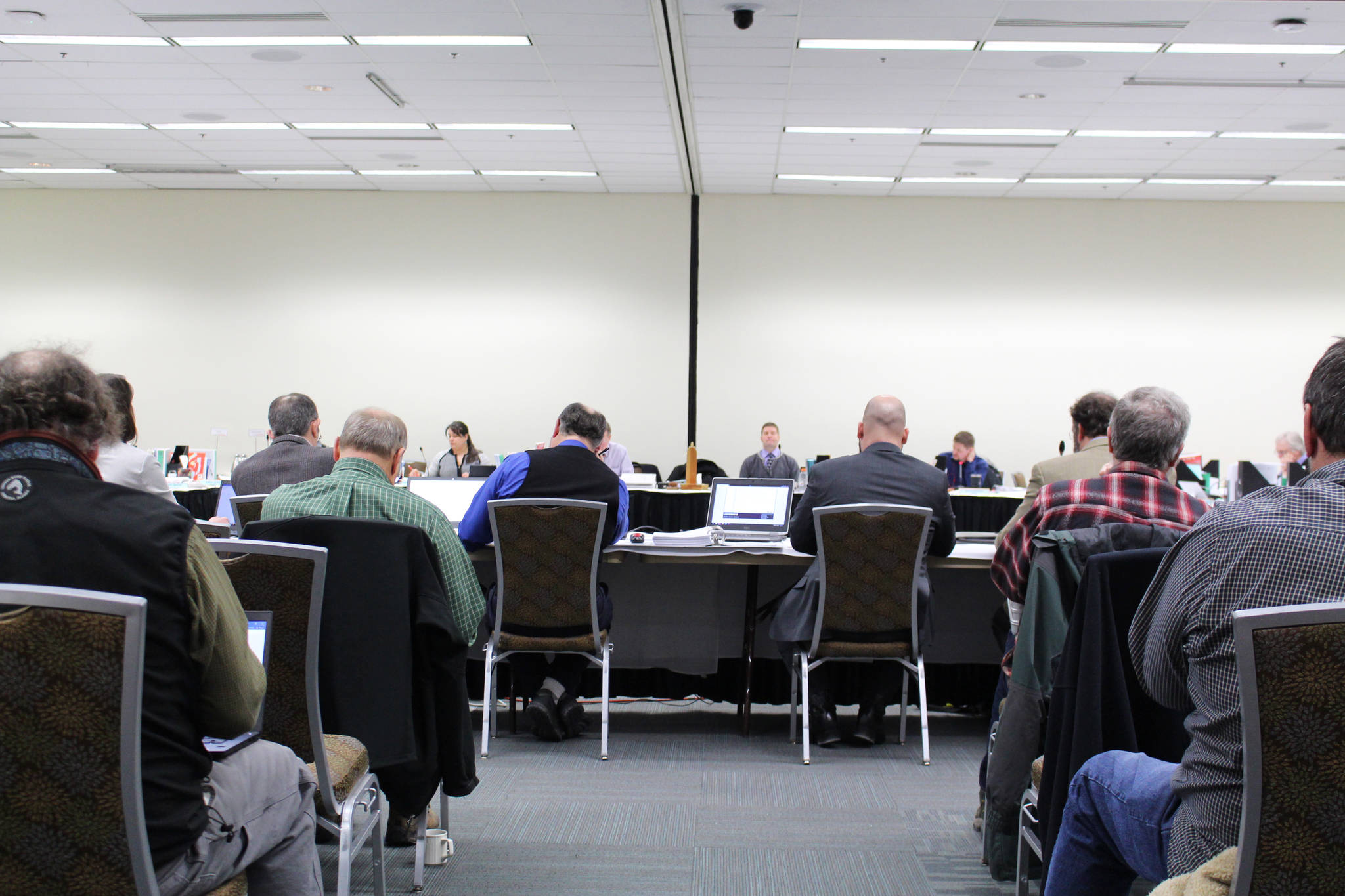The Alaska Board of Fisheries voted Tuesday to increase the in-river goals for the late-run of sockeye salmon in the Kenai River, a move that will potentially increase the number of fish available for the region’s sport and federal subsistence fisheries and decrease the harvest of the commercial fisheries.
The Board is meeting from Feb. 7-19 to discuss and potentially adopt proposals for regulatory changes to the Upper Cook Inlet Finfish fisheries. Proposal 88, which was introduced by the Kenai River Sportfishing Association, was adopted by a vote of 6-1 during Tuesday’s meeting. Board Member Gerad Godfrey of Eagle River was the sole vote against the proposal. Godfrey said on Tuesday that his main concern was that continuing to increase both the escapement and in-river goals could lead to eventual over-escapement in the river, leading to negative impacts on the ecosystem.
“Do I know that we’re getting closer and closer to the breaking point? Well, absolutely,” Godfrey said. “If we can agree that there is a breaking point, every time you add incrementally you are getting closer to the breaking point of nature’s carrying capacity for that system. We could be a long ways away from it, I don’t know, but I can tell you nobody in this room knows that either.”
The Central Peninsula Fish and Game Advisory Committee, which provided its recommendations for proposals prior to the start of the Board of Fisheries meetings, also voted unanimously to oppose this proposal.
The proposal was adopted with substitute language that increases the in-river goal ranges to the following:
For runs of less than 2.3 million sockeye salmon, the in-river range would increase from 900,000-1.1 million to 1 million-1.2 million fish.
For runs between 2.3 million and 4.6 million salmon, the in-river range would increase from 1 million-1.3 million to 1.1 million-1.4 million fish.
For runs greater than 4.6 million salmon, the in-river range would increase from 1.1 million-1.5 million to 1.2 million-1.6 million fish.
The late-run projection for Kenai River sockeye salmon for 2020 is 2.2 million, according to Brian Marston, area manager for the Upper Cook Inlet Fisheries with the Alaska Department of Fish and Game.
In-river goals are established by the board and reflect the number of sockeye salmon that are allowed to make it past the sonar site located at Mile 19 of the Kenai River, just downstream from the Sterling Highway in Soldotna. In-river goals are established based on the sustainable escapement goal (SEG), which ADF&G recently recommended should increase from 700,000-1.2 million to 750,000-1.3 million fish. The sustainable escapement goal is the number of fish allowed to escape the fisheries and spawn such that the stock can be conserved over a five- to 10-year period, according to ADF&G.
Increasing escapement and in-river goals potentially decreases the number of fish that are harvested by the commercial fisheries, depending on the run size in a given year. Since 1999, the commercial fisheries have harvested about 72% of the total number of Kenai River sockeye salmon, with sport fisheries accounting for an average of 15%, according to a report from ADF&G. In the past five years, the commercial fisheries have harvested about 64% of the total fish, with the sport fishery harvesting about 19% of the total stock.
The Board of Fisheries will continue to discuss proposed regulatory changes until Feb. 19. A live audio stream of the meetings can be found on the Board’s website, and audio of each day’s meetings are also posted online after they conclude.
Complete information on the Upper Cook Inlet Finfish meetings can be found here.

